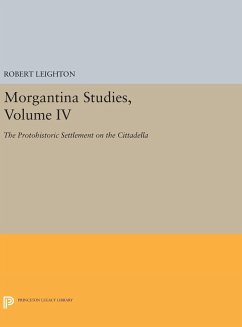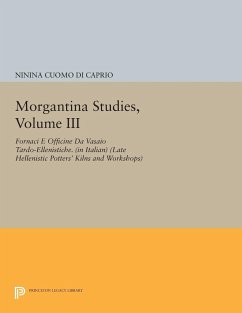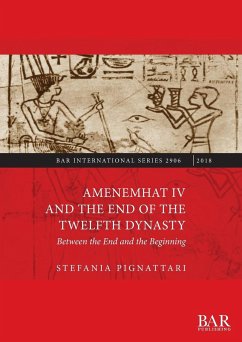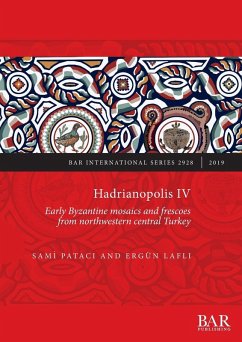
Morgantina Studies, Volume IV
The Protohistoric Settlement on the Cittadella
Versandkostenfrei!
Versandfertig in 1-2 Wochen
47,99 €
inkl. MwSt.
Weitere Ausgaben:

PAYBACK Punkte
24 °P sammeln!
Excavations conducted at Morgantina by Princeton University and the University of Illinois have revealed substantial Iron Age remains beneath the Greek town on the Cittadella hilltop. In this volume Robert Leighton presents a full study of this extensive protohistoric settlement in Sicily. The broad scope of evidence, particularly the survival of long houses and tombs with much of their structures and contents preserved, permits an unusually thorough examination of indigenous cultural traditions prior to the foundation of the Greek town in the Archaic period. An illustrated catalogue of the fi...
Excavations conducted at Morgantina by Princeton University and the University of Illinois have revealed substantial Iron Age remains beneath the Greek town on the Cittadella hilltop. In this volume Robert Leighton presents a full study of this extensive protohistoric settlement in Sicily. The broad scope of evidence, particularly the survival of long houses and tombs with much of their structures and contents preserved, permits an unusually thorough examination of indigenous cultural traditions prior to the foundation of the Greek town in the Archaic period. An illustrated catalogue of the finds presents more than 700 artifacts from the site, most of which are previously unpublished. The author discusses all the excavated protohistoric areas in detail, and presents a full range of maps, plans, excavation photographs, reconstruction drawings, and radiocarbon dates. The diverse body of finds includes a wide variety of pottery forms as well as tools and ornaments of both metal and stone that document local crafts, metallurgy, and numerous aspects of daily life. In studying these objects, Leighton draws on parallels with material from the Italian peninsula and considers the evidence of the historical sources, revealing links between Sicily and Italy in the protohistoric period. Originally published in 1993. The Princeton Legacy Library uses the latest print-on-demand technology to again make available previously out-of-print books from the distinguished backlist of Princeton University Press. These editions preserve the original texts of these important books while presenting them in durable paperback and hardcover editions. The goal of the Princeton Legacy Library is to vastly increase access to the rich scholarly heritage found in the thousands of books published by Princeton University Press since its founding in 1905.













